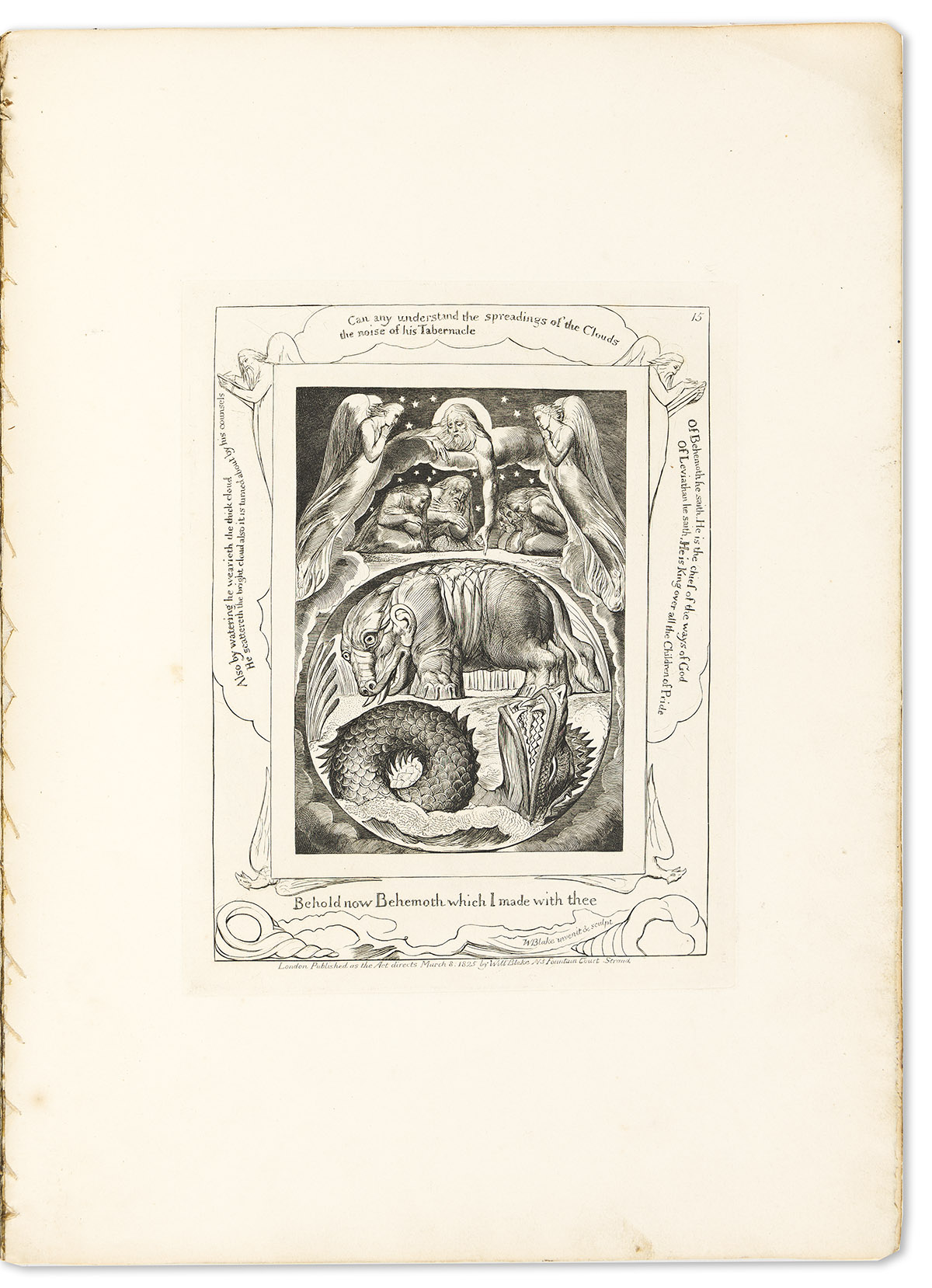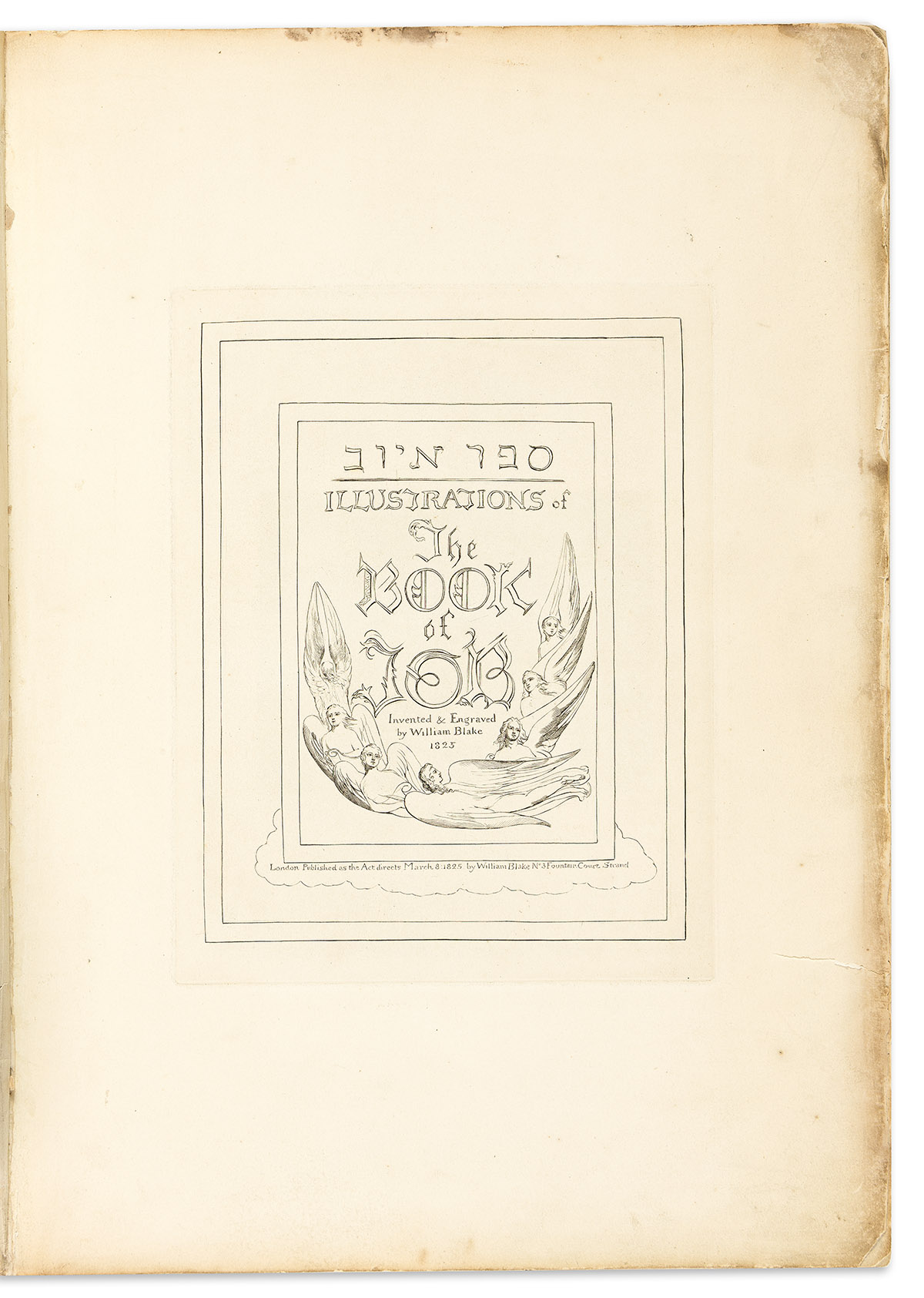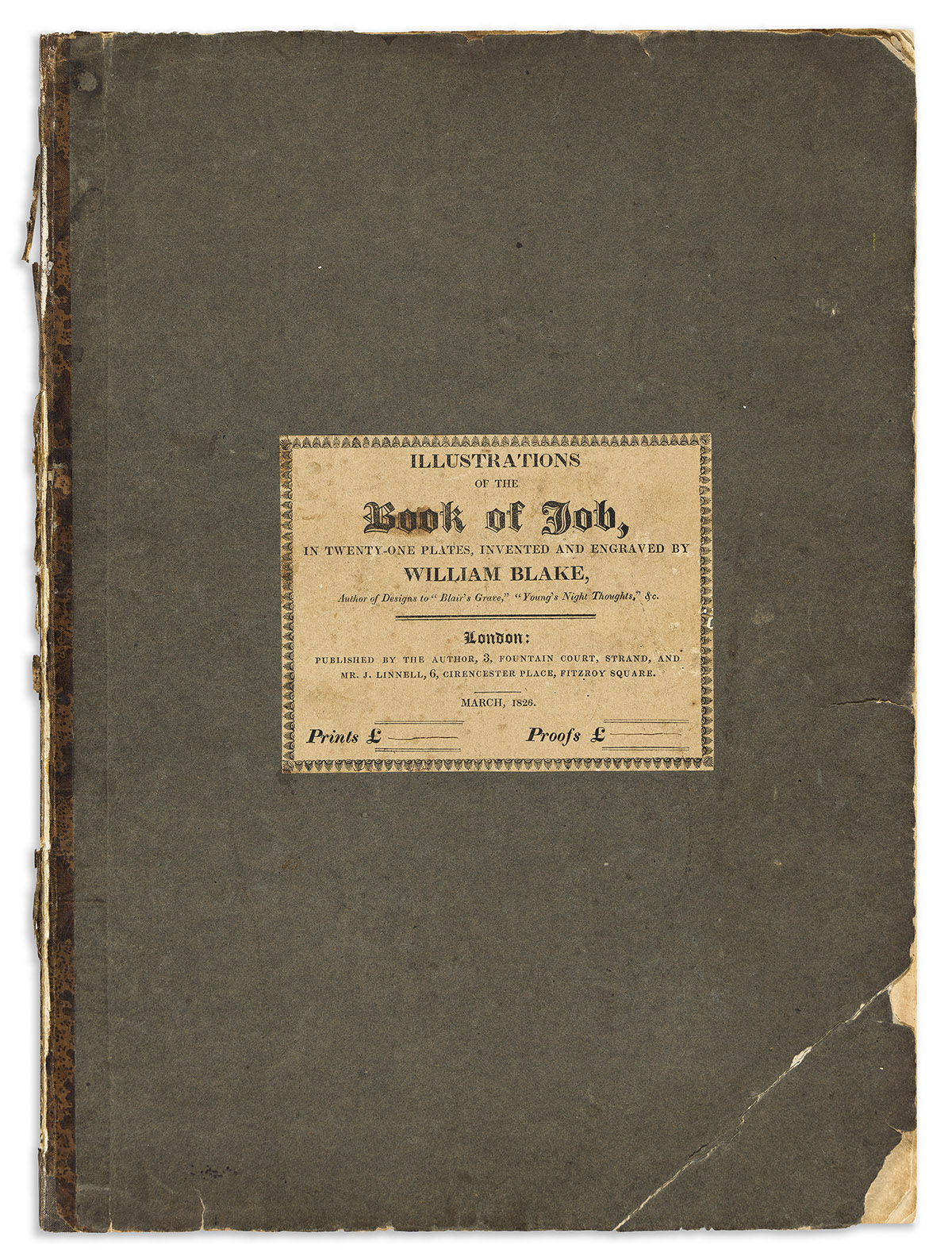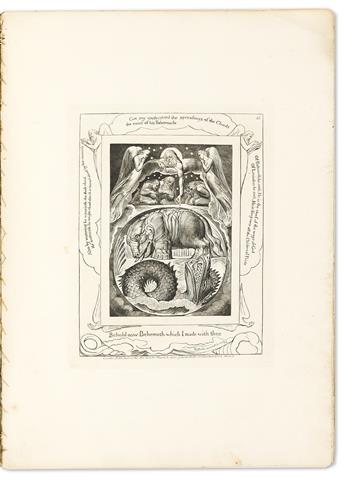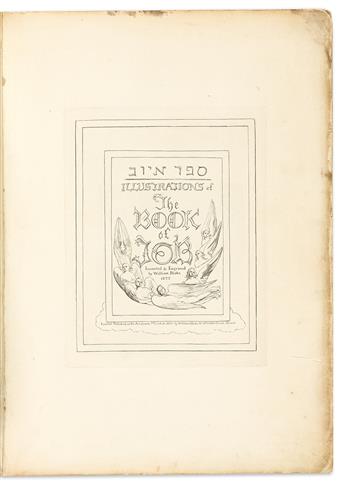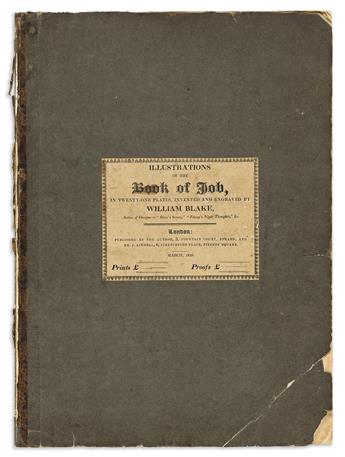Sale 2701 - Lot 115
Unsold
Estimate: $ 20,000 - $ 30,000
Blake, William (1757-1827)
Illustrations of the Book of Job. Invented & Engraved by William Blake.
London: William Blake, 1825.
Folio, one of 100 copies printed on Whatman paper with 1825 watermark without "Proof" in the plates; entirely engraved throughout, consisting of an engraved title page and 21 full-page plates, complete; bound in original limp wrappers with original publisher's label on front cover (large chip to bottom outside corner tacked back in place with archival document tape, loss to terminal edge of corner); housed in custom folding buckram chemise and slipcase; ex libris Henry Hayward with engraved bookplate; 14 3/4 x 10 3/4 in.
Blake began contemplating the Book of Job, notions of evil and God, and making ink studies inspired by Job as early as 1785. The project blossomed into a suite of 19 watercolors originally commissioned by Thomas Butts (1757-1845) and executed circa 1805. These original paintings are currently held at the Morgan. Another set, created for John Linell around 1821 (and held at the Fogg) is somewhat derivative of the Butts set. Linell traced Blake's lines, and Blake added watercolor. It was at this juncture that Blake added two new images to the set: The Vision of Christ, and Job & his Daughters. Linell also commissioned Blake to publish the Job suite as a set of engravings, as we see here. Blake's engravings, carved by him directly into the copperplates, differ from the original paintings. The compositions are surrounded by swirling masses of complex line and engraved text. 315 copies were produced, but only 20 were sold in Blake's lifetime. This project was the last he completed before his death. His illustrations for Dante's Divine Comedy were left unfinished.
Although not a commercial success at the time, Blake did receive positive critical reception for his work. Ruskin wrote, "The Book of Job, engraved by himself, is of the highest rank in certain characters of imagination and expression; in the mode of obtaining certain effects of light it will also prove a very useful example to you. In expressing conditions of glaring and flickering light, Blake is greater than Rembrandt." (Quoted from Elements of Drawing.)
Illustrations of the Book of Job. Invented & Engraved by William Blake.
London: William Blake, 1825.
Folio, one of 100 copies printed on Whatman paper with 1825 watermark without "Proof" in the plates; entirely engraved throughout, consisting of an engraved title page and 21 full-page plates, complete; bound in original limp wrappers with original publisher's label on front cover (large chip to bottom outside corner tacked back in place with archival document tape, loss to terminal edge of corner); housed in custom folding buckram chemise and slipcase; ex libris Henry Hayward with engraved bookplate; 14 3/4 x 10 3/4 in.
Blake began contemplating the Book of Job, notions of evil and God, and making ink studies inspired by Job as early as 1785. The project blossomed into a suite of 19 watercolors originally commissioned by Thomas Butts (1757-1845) and executed circa 1805. These original paintings are currently held at the Morgan. Another set, created for John Linell around 1821 (and held at the Fogg) is somewhat derivative of the Butts set. Linell traced Blake's lines, and Blake added watercolor. It was at this juncture that Blake added two new images to the set: The Vision of Christ, and Job & his Daughters. Linell also commissioned Blake to publish the Job suite as a set of engravings, as we see here. Blake's engravings, carved by him directly into the copperplates, differ from the original paintings. The compositions are surrounded by swirling masses of complex line and engraved text. 315 copies were produced, but only 20 were sold in Blake's lifetime. This project was the last he completed before his death. His illustrations for Dante's Divine Comedy were left unfinished.
Although not a commercial success at the time, Blake did receive positive critical reception for his work. Ruskin wrote, "The Book of Job, engraved by himself, is of the highest rank in certain characters of imagination and expression; in the mode of obtaining certain effects of light it will also prove a very useful example to you. In expressing conditions of glaring and flickering light, Blake is greater than Rembrandt." (Quoted from Elements of Drawing.)
Exhibition Hours
Exhibition Hours
Aliquam vulputate ornare congue. Vestibulum maximus, libero in placerat faucibus, risus nisl molestie massa, ut maximus metus lectus vel lorem.



